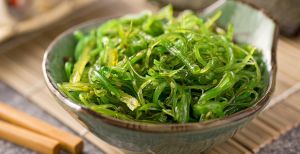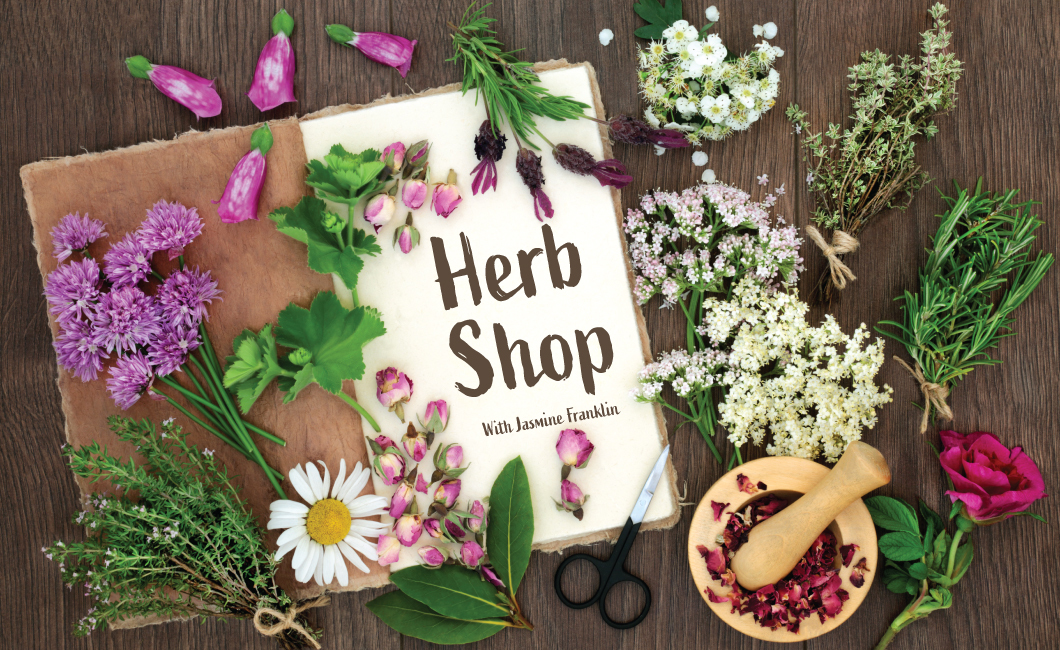- Antiseptic for treating wounds
- Radiation protection
- Rich in vitamins, minerals, trace elements, enzymes
- Rich in a variety of protective antioxidants
- Reduces heart disease risk
- Aids weight loss
- Prevents infection and inflammation
- 1 tbsp. dried, ground seaweed
- Coffee grinder
- A small bowl
- 1 to 2 tbsp. lukewarm water
- A fork
- 1 tsp. aloe vera gel (optional)
- 1 tsp. honey (optional)
- Break sheets or pieces of dried seaweed with your hands until they’re small enough to fit into a coffee grinder.
- Grind the seaweed into powder; you need about 1 tablespoon of seaweed powder in all.
- Dump the seaweed powder into a small bowl, and add 1 tablespoon lukewarm water. Mix with a fork, adding up to another tablespoon of lukewarm water, as needed, to achieve a thick, paste-like consistency.
- Add 1 teaspoon aloe vera gel, 1 teaspoon honey -- or both -- to the paste. Stir until well mixed. Add more water, if needed, to achieve the desired texture. You can also skip these ingredients entirely if you so desire, although the aloe helps heal any skin irritation you may have and the honey adds to the moisturizing effect of the mask and acts as a preservative.
- Apply the seaweed mask to your face, leave in place for up to 20 minutes and rinse off with lukewarm water. Pat your skin dry. Use this mask up to twice a week as part of your regular beauty routine.
- 2 fresh salmon filets w. skin (300-350 g)
- 1-2 cup cooked brown rice (cooked according to the label)
- 3,5 oz wakame seaweed (100 g)
- 1 ripe avocado in slices or cubes
- 1/2 cup edamame beans removed from pod (100-125 g)
- 1 lime
- 1/4 cup plain teriyaki
- 1 Tbsp agave or runny honey
- A pinch of hot chill powder/flakes
- 2 Tbsp sesame seeds
- Prepare the marinade by stirring together teriyaki, honey and chili. Use a plastic bag to marinade the salmon. Place salmon in the bag and pour in marinade, let it rest in the fridge at least one hour or all day.
- When it is time to cook dinner remove the salmon from the fridge and preheat oven to 175 °C/350 °F. Place the salmon in a baking pan (preferable lined since teriyaki will stick and be difficult to clean) and pour over the teriyaki. Coat the salmon with the sesame seeds (you can use as many as you please) and cook it on the oven until it is slightly pink in the middle and the meat divides in flakes, around 12 min depending on size and oven.
- Serve in a bowl: Add half the rice and half the edamame beans, some slices/cubes of avocado, a portion wakame seaweed and top with a pieces of salmon. Drizzle with some lime juice and season with some extra teriyaki or soya.
Written by Jasmine Franklin on July 2, 2019.
Plants have always been a part of my life. My parents believed in the holistic elements to certain plants and was always quick to look there first. They always worked hard to create something to pass on to us, which is why I decided to start the Herb Shop! I want to share where I'm from, where a lot of our medicinal fixes originated from, as well as, shine a light on the multifaceted uses of common plant life that we look past every day.

Fucus versiculosis I.e. Kelp
Kelp is a type of seaweed, specifically long-frond brown algae, which grows to lengths of 200 feet off Japan, Europe, and North America. Kelp forests turned barren oceans into thriving spaces filled with sea life. Ancient seafarers were well acquainted with the kelp beds and kelp forests off England and France. Early fishermen burned the plant for fuel and wrapped, baked, and ate fish in it. By the 18th-Century, physicians noticed that people who lived along the Atlantic coasts rarely developed goiters – the large growths in the neck that were later shown to be enlarged thyroid glands. (Castleman, 1995, p. 333).
Health Benefits
Kelp, as a source of iodine, used to be the treatment of choice for goiter – a thyroid enlargement caused by iodine deficiency. A few modern herbalists still recommend kelp for the thyroid. But today kelp is more known as a protector from radiation, heart disease, and toxic heavy metals. Kelp, due to its high levels of iodine, has also been observed as a method of weight loss. The iodine stimulated their thyroid, which boosted their metabolism, and helped them burn calories faster. Kelp gained a reputation as a treatment for obesity, which it retains to this day. (If thyroid function is normal, kelp does not promote weight loss). (Castleman, 1995, p. 335-337).
Here is a brief list of some health benefits observed with the use of kelp:
WARNING: Sea kelp is rich in iodine as it rapidly absorbs the high iodine content of the sea. Taking excess amounts of kelp, and in turn iodine, can cause many health problems including hyperthyroidism, Grave's disease and thyroid cancers. Mild iodine poisoning has the following symptoms: diarrhea, burning sensation in your mouth, nausea, and vomiting. Severe symptoms of iodine poisoning include: swelling of your airways, turning blue (cyanosis), weak pulse, and/or coma. Different forms of kelp can vary greatly in iodine content too; another reason to be cautious.
Other Uses
Marine plants and extracts have been used in beauty products for centuries, and they’ve now started making their way into more mainstream products. Sea Kelp Extract is present in a number of skincare and haircare products, and rightly so. It’s rich in minerals that benefit both the skin and hair. As well as the vast amounts of skincare benefits, Sea Kelp is also perfectly suitable to ingest and is often found in supplements. See the recipe for a Seaweed Facial Mask below.
Ingredients Needed:
Steps:
Recipe of the Day
Kelp, and other forms of seaweed, may not be as well-known as other super foods like kale but it is filled with vitamins and nutrients that are hard to find combined elsewhere. It’s a herb that has remained a stable in Asian cuisine for centuries, and for good reason. The recipe for this month is Salmon and rice bowl with edamame beans and wakame:
Ingredients Needed (serves 2):
Teriyaki marinade:
Steps:
Sources:
Castleman, Michael. The Healing Herbs: The Ultimate Guide to the Curative Power of Nature’s Medicine’s. Bantam: New York, 1995. Print.
https://www.healthline.com/nutrition/benefits-of-seaweed#section5
https://www.healthline.com/health/iodine-poisoning
https://www.integrativenutrition.com/blog/2015/11/7-ways-to-eat-more-seaweed-and-why-you-should



